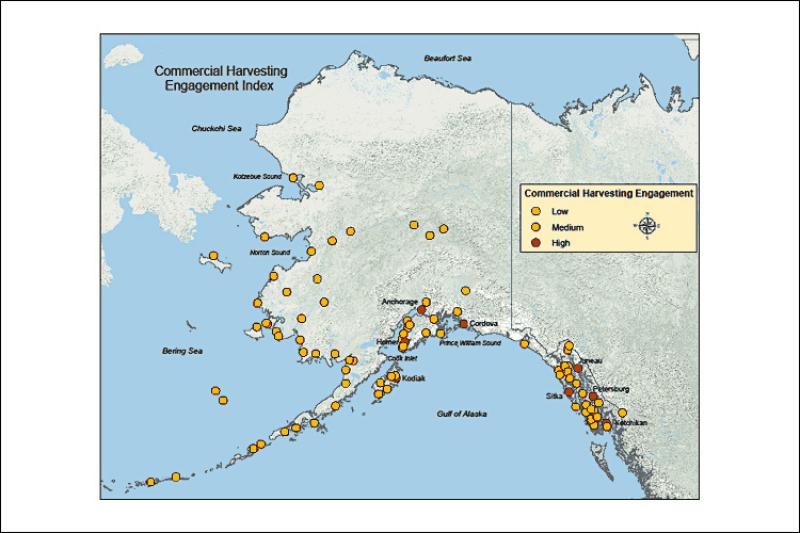Distribution of commercial harvesting engagement for 89 Alaskan fishing communities. All communities that rank in the top 10% are considered high and are labeled and in red.
With the growing emphasis on ecosystem-based management by resource managers, there is an expanding need for measures of social well-being and sustainability for fishing communities. Because primary data collection is time-consuming and costly, use of secondary data is a practical alternative that can provide substantial cost savings in developing these measures.
Researchers with the Alaska Fisheries Science Center’s (AFSC) Economic and Social Sciences Research program have used secondary data in the development of fisheries engagement and reliance indicators to measure Alaskan fishing community involvement in a variety of aspects of fishing.
In their study, they consider three categories of fisheries involvement: commercial processing, commercial harvesting, and recreational fishing. They then create numerical indices of engagement and reliance for each category of fisheries involvement for each community included in the study. These indices can be used to assess which communities may be most affected by changes in fisheries management in Alaska.
Through their project they have developed a novel way for fisheries managers to look at the potential community impacts associated with fisheries management changes. The approach represents a quantitative method for incorporating multiple data sources across commercial processing, commercial harvesting, and recreational fishing involvement into measurable concepts of fishing engagement and reliance at the community level.



